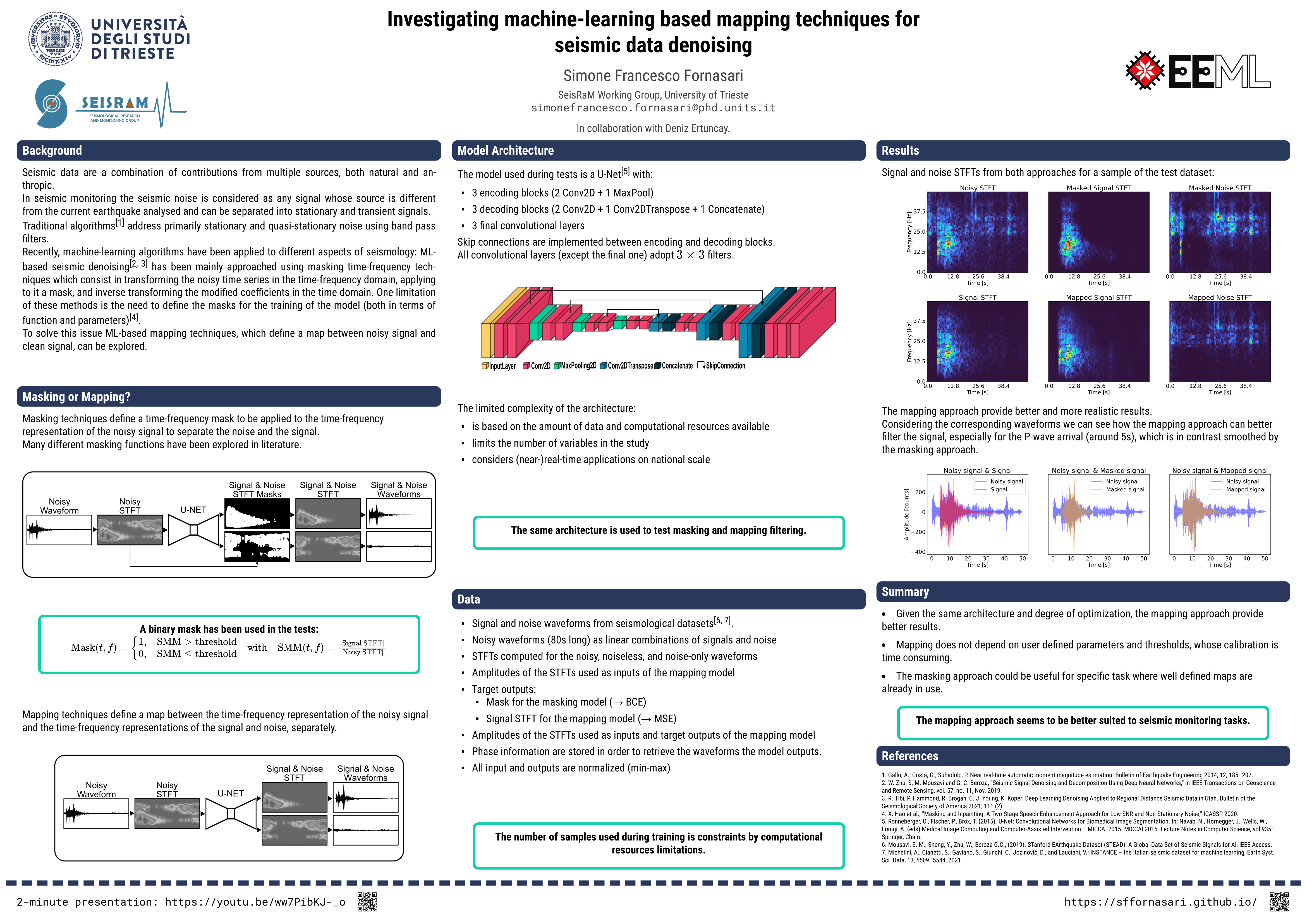EEML 2022 - Poster
During the Eastern European Machine Learning Summer School 2022 I presented (once again virtually…) the results from some preliminary tests performed with Deniz Ertuncay within the context of the development of a ML denoising algorithm.

A little bit of context…
Seismic data are a combination of contributions from multiple sources, both natural and anthropic: the unwanted components are called seismic noise.
Traditional algorithms address primarily stationary and quasi-stationary noise using band pass filters.
ML-based seismic denoising has been mainly approached using masking techniques which consist in transforming the noisy time series in the time-frequency domain, applying to it a mask, and inverse transforming the modified coefficients in the time domain. The optimal definition of the mask and its parameters can be limiting.
To solve this issue ML-based a mapping approach, which define a map between noisy and clean signals, has been explored.
The goal of the work…
The work investigate the possible advantages in using a mapping approach for seismic filtering.
Given the same amount of optimization and resources (both in terms of model parameters and training), the mapping approach overperform the masking one.
The method used in the test is trivial but highlights some interesting aspect of the two considered approaches: the main take-away is that if we have a statistically-representative database of the noise, it’s a fair assumption that the mapping model would be more accurate.
Video presentation…
A 2-minute presentation of the poster is available here: this is also my first video ever on Youtube!
A note on EEML Summer School…
It has been an intense, challenging, but overall great experience! Top-notch researchers sharing their knowledge. I’m really glad I was able to partecipate.
“In the dark days to come, I must learn!” - Silver Surfer (Norrin Radd)
